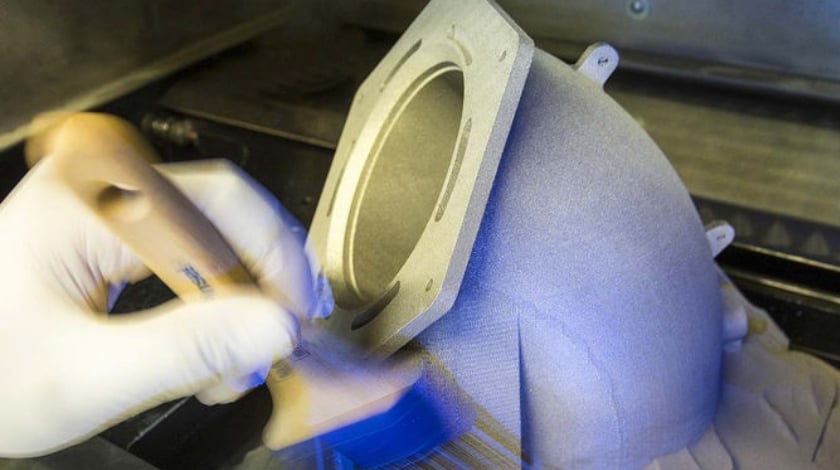Photo: Airbus Press Release
Reading Time: 2 minutesAirbus is making significant investments in revolutionary additive layer manufacturing technologies (3D printing) – with expanding capabilities that are demonstrating the company’s pioneering spirit to create new and better ways to fly.
At the centre of Airbus’ innovative efforts is the company’s new additive layer manufacturing initiative – which creates a grouping of experts and competencies from the aircraft manufacturer’s engineering, manufacturing engineering and procurement operations. With this knowledge base, Airbus is well-positioned to define a vision, strategy and roadmap for applying 3D printing technologies.
This approach will accelerate the company’s technical and industrial competencies and bring together research and technology activities directly with programmes, said Jerome Rascol, who heads this additive layer manufacturing initiative.
“I can see Airbus manufacturing a ‘bionic’ aircraft based on 3D printing in the future, so we’re taking a pragmatic, step-by-step approach,” he said.
A futuristic technology taking flight with Airbus
Additive manufacturing is a relatively quick process for creating three-dimensional parts from a digital model by adding successive thin layers of a base material. The technology results in lighter parts, with shorter lead times, fewer materials used during production and a significant reduction in the manufacturing process’ environmental footprint.
3D-printed parts already are applied in Airbus’ commercial jetliner product line – from the widebody A350 XWB to its single-aisle A320neo and the cornerstone A300/A310 Family. For example, some 2,700 plastic parts have been produced by additive manufacturing for the A350 XWB programme, with Airbus also working with the European Aviation Safety Agency (EASA) to qualify titanium components produced with 3D printing technology.
This innovative technology also has been utilized to produce pylon components for the A320neo (new engine option) developmental aircraft in support of the flight test campaign, and for out-of-production spare parts on the A300/A310 Family of jetliners.
“Printing tomorrow’s technology”
With its additive layer manufacturing initiative, the company is focused on taking its capabilities even further, Rascol explained.
“There are surely applications and paradigm changes we have not thought of yet. We are thinking every day about ways to 3D print tomorrow’s technology for airframes, cabins and systems.”
This forward-looking strategy focuses on developing methods, tools and training for 3D printing; supporting the wider application of additive manufacturing technologies in Airbus’ supply chain; as well as cooperating with airworthiness authorities to quality materials and processes for certification.

